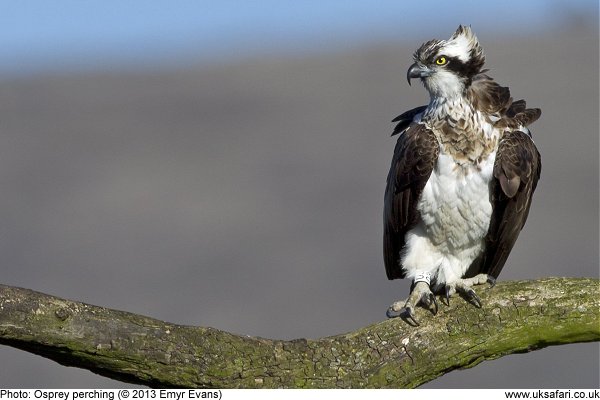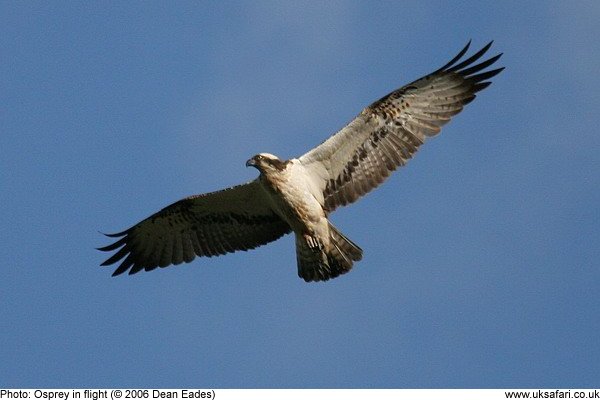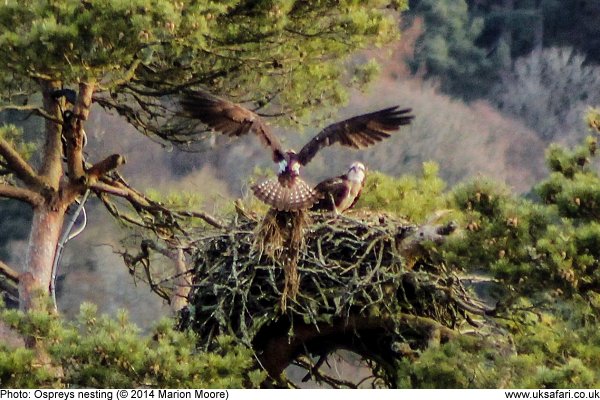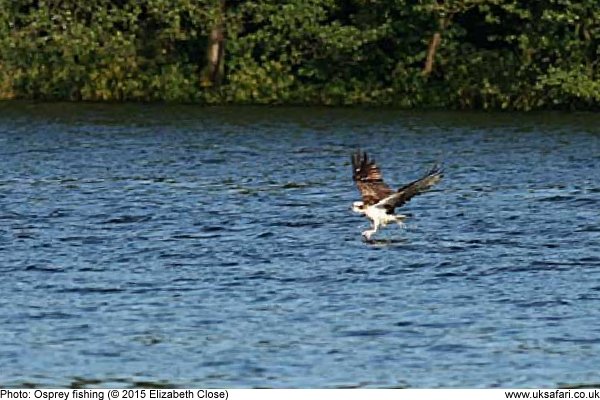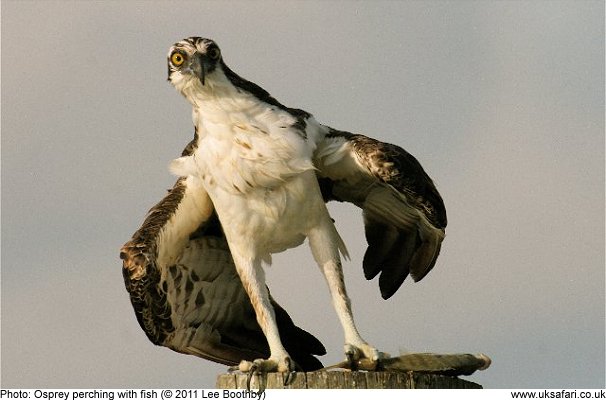 Quick Facts
Quick Facts
Scientific name: Pandion haliaetus
Size: Approx 60cm. Wingspan up to 175cm
Distribution: Can be seen in many parts of the UK on migration. The main breeding sites are in the Scottish Highlands at Loch Garten, Speyside, and Loch of the Lowes. In England they have nested at Bassenthwaite, Cumbria and Rutland Water. In Wales at the Glaslyn Valley
Months seen: March to September. UK birds spend the winter in Africa
Habitat: At lochs, lakes, reservoirs and estuaries. Nesting sites are generally next to water with conifer forests
Food: Fish
Special features: The osprey has mottled white underparts and dark brown plumage on its upperparts. The head is white with a dark brown band running from each eye down the side of the head and neck.
In flight the wings have a distinct angle at the 'wrist' which has brown plumage contrasting sharply with the white plumage.
Most of the UK Ospreys migrate to West Africa in late summer. The females go first, leaving the males to teach the young how to find and catch fish. After the males have left, the juveniles follow some weeks later. They instinctively find their way to Africa without their parents to guide them
 Related Pages
Related Pages

 Popular Pages
Popular Pages
Amphibians, Bats, Badgers, Beetles, Birds, Birds of Prey, Bumble Bees, Butterflies, Caterpillars, Creepy-Crawlies, Deadly Spiders, Dolphins, Dragonflies, E-Postcards, False Widow Spiders, Free Newsletter, Frogs, Fungi, Garden Spiders, Glow-Worms, Grey Squirrels, Hedgehogs, House Spiders, Ladybirds, Mammals, Marine Mammals, Moths, Owls, Reptiles, Spiders, Toads, Trees, Wildlife Hospitals
© Copyright 2017 G. Bradley - UK Safari | About Us | Links | Contributors


 Osprey
Osprey